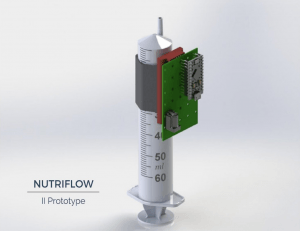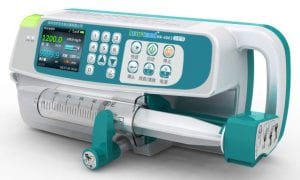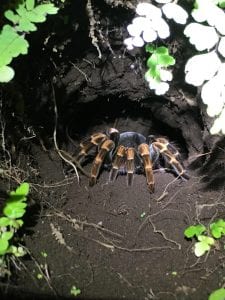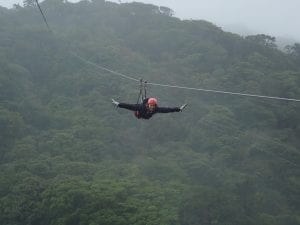This week was the first time I began making progress for my implementation project: MilkyWaves. I’ll be working with Christine to further develop this device into a product which could be used by various hospitals in Costa Rica.
MilkyWaves Mission
One of the most important factors promoting neonates’ growth and development is to maximize the percentage of fat content delivery from breast milk. Neonates need to quickly and efficiently put on a healthy amount of weight, and failure to receive adequate nutrition could result in serious complications or death. Seventy-five percent of these deaths could be prevented with access to existing technology and that’s exactly what MilkyWaves plans to do. MilkyWaves is a device to improve fat delivery via enteral feeding to increase the rate of weight gain in premature infants.
In many low resource settings, a large percentage of fat and caloric intake is wasted because it remains attached to the syringe and tubing instead of reaching the neonate. Current scientific data shows that, once outside the body, fat in breast milk is separated. Most developed countries, such as the United States, have chemicals and machinery to prevent this, however low resources settings cannot afford this current solution. Students before us identified three variables which affect the separation of breast milk once in the syringe pump: temperature, vibration and position of the syringe. MilkyWaves combines these three factors into one device to prevent milk separation and maximize fat delivery content. The device is essentially a heating and vibration pad which surrounds the majority of a syringe’s external surface. This pad is controlled by a PCB board and heat sensors measuring the liquid’s temperature. The electronic component allows for the heat pad to be adjustable in order for the liquid to be heated to ~40 degrees Celsius (the optimal breast milk temperature). Finally, this cover is compatible with infusion pumps used in Costa Rican hospitals, such as the Hospital Nacional de Niños in San José.
Meeting
This week we were able to meet with Guiselle and Jorge who essentially began the MilkyWaves project 2 years ago. They were both very helpful and you can tell that they really believe in MilkyWaves’ mission and have worked very hard to find the best solution. During the meeting, we received background information about the project, discussed the project’s history over the past 3 years and established our next steps before we return to Houston. We also decided to update Guiselle and Jorge on our project every month, either through Skype or email in order to ensure open communication.
It seems that our main goals this year will be writing and implementing MilkyWaves’ first clinical trial in Costa Rica. In this clinical trial, we want to officially prove that a vertical position of the syringe promotes better fat intake compared to the tradition horizontal position. Hospitals use the horizontal position now because most infusion pumps are manufactured for non-medical purposes. This is an unjustified doctrine which heavily effects neonates’ fat intake and we, therefore, plan to debunk this habitual practice. In addition, while writing and establishing the clinical trial is our main objective, there are several redesigns which we can also explore. For instance, we want to investigate whether the current heating system is the optimal method to heat the entire volume of milk. In addition, we want to move the Micro-controller and PCB board away from the syringe in order to reduce the risk of exposing the electronics to liquid. Our final goal involves establishing and strengthening partnerships with breast milk providers to standardize our clinical trial and help Costa Rican hospitals in the long run.
Before Houston
While the majority of our project work will begin once we return to Houston, there are several tasks we can complete now to get a head start. Before we leave Costa Rica we will, hopefully, be able to coordinate a NICU (Neonatal Intensive Care Unit) hospital visit to observe the environment where our device will be implemented. In addition, I need to become VERY familiar with the history and current status of this project by reading, taking notes and rereading all the documentation provided to us by past teams. Finally, we plan on having a Skype meeting with one of GMI’s past students to begin understanding the clinical trial process here. Costa Rica has a unique situation regarding clinical trials, being that they were banned by the government up until 2014. In light of this, pushing our design to clinical trial will undoubtedly present various challenges. Luckily, Consultika, another implementation project, managed to begin running Costa Rica’s first clinical trial last year! Callie, the project lead for Consultika, and her documentation from last year will, therefore, be a huge asset during this journey.
Weekend Adventures
This weekend we went to Monteverde, which is a rainforest famous for their diverse ecosystem and of course… zip lines! We took advantage of both by doing a “night hike” and then doing Latin America’s longest zip line. Since this is already a long blog, post I’ll provide some photos to convey how incredible of an experience this weekend was:





